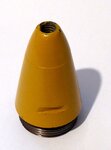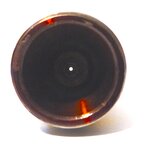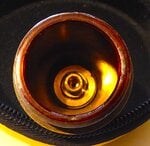I recently read here http://www.ammunitionpages.com/download/130/japanese about a series of fuzes, employed by the Japanese, for their 20mm autocannon rounds, which didn't use the usual striker but relied solely on a column of hot air to fire up the lead azide capsule.
Does anybody have more info or actual pictures of these fuzes?
It seems to me quite a dangerous and not very efficient fuze. Dangerous because there is no safety mechanism. The starting capsule is practically exposed on the nose of the shell at the end of a very short passage. Not very efficient because the 'air piston' striking the capsule solely depends on the shell hitting head on something that is hard enough to flatten the head of the fuze squishing the air in it. Its only advantage to me seems that is cheaper to produce as it doesn't need a lot of precision machined parts. Was it a 'last ditch' design employed in the last months of war?
Does anybody have more info or actual pictures of these fuzes?
It seems to me quite a dangerous and not very efficient fuze. Dangerous because there is no safety mechanism. The starting capsule is practically exposed on the nose of the shell at the end of a very short passage. Not very efficient because the 'air piston' striking the capsule solely depends on the shell hitting head on something that is hard enough to flatten the head of the fuze squishing the air in it. Its only advantage to me seems that is cheaper to produce as it doesn't need a lot of precision machined parts. Was it a 'last ditch' design employed in the last months of war?





